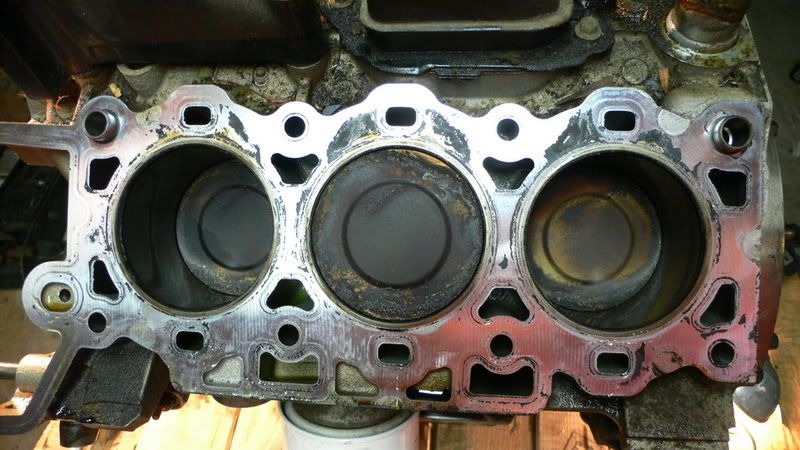Also, I got out and started the car yesterday. Let it idle for an hour and a half.
While it was idling I was looking around the rear valve cover, exhaust manifold, etc. While parts of the valve cover do have some oily gritty spots their is no dripping or running from the valve cover down, I got a good look yesterday while it was light out. The top of the exhaust manifold is dry on top and the head above the exhaust manifold is dry.
So I climbed under the car (with it running, on jack stands, and it gets really hot when those fans kick on) to look back up at where I took the picture. I held a telescoping mirror up there to look at it from various angles. The oil or whatever you see in the pictures is only there, nowhere else. The oil only goes up about half way on the exhaust port nearest the driver side but only a very small amount just along the edge of the flange and the exhaust tube. The other two exhaust ports have a black burnt streak (which can be seen in the picture in my first post) under them on the block. The oil is mostly under the exhaust port nearest the driver side and it also looks like it's on the gasket below the exhaust flange between the middle exhaust port and the one nearest the driver side (can also be seen in the picture). I know I will sound crazy but I have to ask so please just give me an honest answer, is there any way oil can make it's way into the exhaust ports without being burnt and then leak out of the exhaust manifold? I know it sounds crazy but I swear that is what it looks like. I wish I could get pictures to show but it's way to tight to get the camera in there. Is there any other way that oil could get there? I was going to touch it and see how it felt but it was too hot while I was looking at it from the car running so I let it sit but didn't get a chance to get back out there later that night. It looks wet but it's appear to be running or anything.
Also, while the car was running I smelled the exhaust to see if it smelled like burnt oil or coolant. The exhaust was most visible while the car was warming up, but once it got to operating temp and the fans kicked in it's wasn't bad. I did notice the exhaust was more visible when the fans weren't running and almost non-existent when the fans where running, is that normal? I assume some visible exhaust out the tailpipe is normal as it felt hotter than it was outside, correct? I just want to make sure I'm not being over paranoid. Once the car was at operating temp I smelled the exhaust and it smelled like, well, exhaust. I couldn't notice any smell of burnt oil or the sweet smell of burnt coolant as it should be noticeable I would think. The exhaust did smell a little different while it was warming up but I assume thats normal or maybe because it hadn't been run in almost a month. The smell during normal operating temp is what I should be concerned about correct?
The car started up and ran fine. There is a screech at start up which I've read is tensioners, it's only at start up when the car is cold and thats it. If I turn the car off and then turn it back on while it's still warm the screech isn't present. I figure I will replace the tensioners when I pull the front engine cover (oil on the bottom of the cover and oil pan, pull it double check the inside).
The car idled well, needle stayed right above the 750 line so around 800 rpm I would say. There were a couple puffs out the exhaust as it was warming up but the needle didn't move so I dont think it was anything.
Any thoughts?



